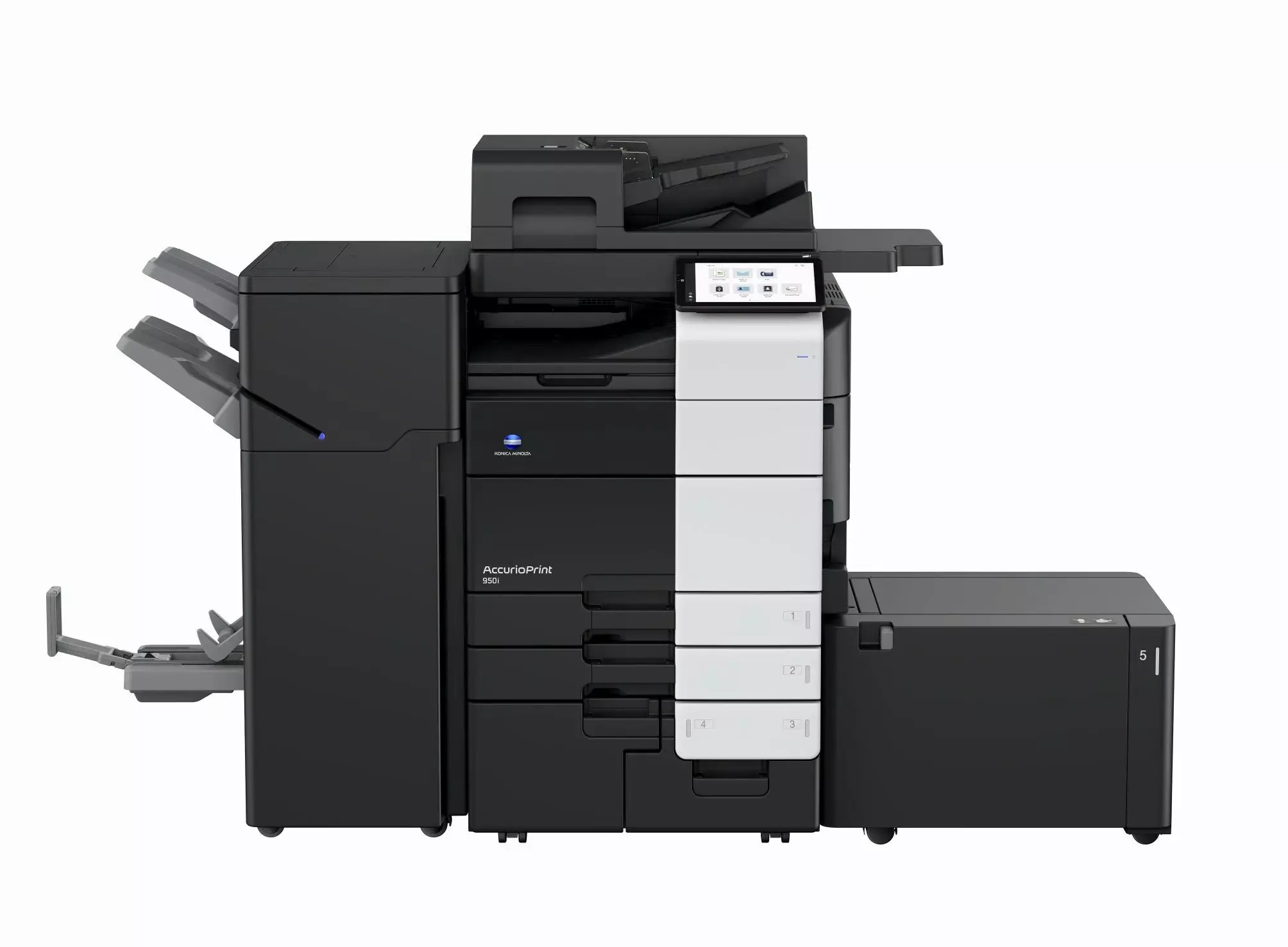Hardware
Printing demands a
green blueprint
Innovation and circular economy principles are pillars of sustainability for SA’s print industry, writes MOHAMMED VACHIAT, head of sales at Konica Minolta SA.
Sustainability in the print industry is not merely about green initiatives; it’s about integrating eco-consciousness into the very fabric of business operations and enabling commercial print customers to do the same.
Sustainability is also a narrative that’s becoming increasingly crucial as businesses, consumers, and regulatory bodies call for greater environmental accountability. In this rapidly evolving landscape, the print industry has to take decisive action to embrace and integrate sustainable practices, drive innovation, and pave the way for more responsible use of resources and a smaller environmental footprint.
The use of recycled materials in the production of printers is an obvious starting point for the delivery of this commitment. This transformation requires that industry participants look beyond the product lifecycle and see printer production materials as part of an ongoing cycle. It’s a reimagining that views waste not as an endpoint that has to be responsibly managed in the overall production cycle, but as a resource for repeated future production.
This innovative way of thinking is at the heart of Konica Minolta’s sustainability strategy. We invest significant amounts into research and development to create eco-friendly printers, consumables, and technologies that minimise environmental impact while delivering high-quality print results. This results in optimised material usage to reduce waste and resource consumption throughout the product lifecycle. As part of the implementation of these circular economy principles, Konica Minolta SA runs initiatives like take-back programmes, remanufacturing, and closed-loop recycling processes to maximise resource efficiency and minimise waste generation.

Mohammed Vachiat, head of sales at Konica Minolta SA.
Our B850i & B950i monochrome models exemplify this ethos. Monochrome printing embraces the principles of simplicity, efficiency and sustainability. In many contexts, from text documents and internal communications to educational materials, monochrome printing offers a sustainable alternative that aligns with the idea of doing more with less. The print quality, speed, and economic benefits of monochrome are undeniable, but it’s the reduction in consumables and energy usage that truly highlights its sustainable advantage. In addition, the manufacturing process for these printers is reflective of a broader vision that sees printers not as disposable commodities, but rather as durable assets. It’s a stance that not only challenges the global throw-away culture but also prompts the print industry to rethink the design of its equipment for lifecycles that extend beyond initial use.
In practice, the advances in mobile printing options, such as AirPrint and Google Cloud Print, further acknowledge the changing landscape of work and the need for flexibility without forsaking sustainability. This perspective reinforces the idea that future-focused companies like Konica Minolta, must consider every angle – from the materials they use to the way their products adapt to new work environments.
For us, the adoption of these innovative approaches demonstrates the maturity of our organisation and exemplifies an outlook that values resourcefulness and responsibility over short-term profitability.
Reducing energy consumption is another crucial step that must be taken to secure a more sustainable future for the print sector and its participants. Thanks to advanced energy-efficient technologies like LED printing, the print industry is making strides in lowering operational costs and reducing the environmental impact of its products and processes. For Konica Minolta SA, these energy innovations are not just about cost saving or overcoming energy supply challenges (although they do both these things), they also are about preparing for a future where energy stewardship is integral to business reputation and sustainable success.
Of course, the conversation about sustainability also extends to the materials on which businesses and people print. The shift towards inks and processes that are friendlier to recycling initiatives marks a significant step in the right direction. As the industry progresses, the development of inks that maintain quality on recycled materials, while being non-toxic and biodegradable, will increasingly be an area of focus, and one in which we will continue to lead the way as a pioneer and innovator.
Importantly, the significance of Konica Minolta SA’s sustainability efforts extends beyond the operational outcomes we are achieving in our own business. We are also succeeding in gradually reshaping broader consumer perceptions, behaviours and expectations. In an age where customers align their purchasing decisions with their values, a company’s commitment to sustainability becomes a potent component of its brand identity and one that consumers choose to support. So, the industry’s adaptation to this shift is not just good ethics, it is sound economics.
The path to print industry sustainability cannot be a solitary one. It demands collaboration, a shared vision and collective action where the industry comes together to drive change, set new standards, and share best practices. Success requires the commitment and involvement of every stakeholder in the print value chain, from manufacturers to end users. Sustainability must be more than just a response to external pressures; it needs to be about redefining the role of print in a sustainable future for all people and industries. And Konica Minolta South Africa is determined to lead the way.



















